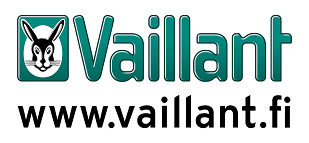Combustion-based heating generates a significant proportion of the total volume of carbon dioxide emissions in Finland. To combat climate change, we must stop using fossil fuels, but in the long term, we must also stop burning biofuels. In Finnish conditions, heat pumps are often the most practical and cost-effective solution for combustion-free transition. Using electricity, heat pumps can very effectively harness even low-temperature ambient and waste heat both for heating and cooling. Fortunately, electrification of heat is well under way in Finland. Finland’s 1.2 million heat pumps already provide almost 20% of heating. Thanks to the high profitability of investments, the growth of the heat pump market just keeps accelerating. In 2021, the market grew by 25%.
According to Finnish Heat Pump Association SULPU ry statistics, 130,000 heat pumps were installed last year and investments in them amounted to EUR 800 million. The largest group of investors was the owners of single-family houses and residential buildings. The overall value of investments in the more than 1.2 million heat pumps in Finland already totals EUR 7 billion. In 2021, the sales of all types of heat pumps increased.
Partly helped by the aid available for replacing oil boilers, air-to-water heat pumps (AWHP) showed the highest growth rates, more than 50%. A total of 12,500 AWHPs were sold in 2021. The ground source heat pump (GSHP) market also grew rapidly to almost 10,000 pumps. In addition to single-family houses, GSPH’s were increasingly installed in large units such as apartment buildings and service buildings but also for the production of district and block heating and cooling. The sales of geothermal systems grew by about 20%. Waste heat recovery rate increased in large industrial, waste water, and other similar recovery sites, but also in the recovery of exhaust air from apartment buildings. More than 500 apartment buildings began saving up to 50% of their district heating by deploying exhaust-air heat pumps (EAHP), and many moved entirely away from district heating and started using either ground-source heat or a combination of exhaust-air and ground-source heat pumps. For single-family houses, exhaust-air heat pumps are mostly sold to new buildings. This sector, too, saw a good 20% growth.
Last year, air to air heat pump (AAHP) installs already exceeded 100,000. The emergence of cooling in apartment buildings further drove the hot AAHP market. The majority of air to air heat pumps are, however, installed to save heat energy in electrically heated houses and holiday homes. Mr Jussi Hirvonen, Executive Director of the Finnish Heat Pump Association SULPU, estimates that ASHPs used for cooling in apartment buildings account for 10 to 15% of the AAHP market.
The heating and cooling of shopping centres, service buildings, and logistics centres is increasingly managed through site-specific, MW-size heat pumps. For district and block heating and cooling, dozens of heat pump projects are currently underway. The use of waste heat from industrial sites, data centres, and cooling almost always requires heat pump technology. Heat pump technology is evolving. Heat pump performance values and achievable temperature levels have rapidly improved, so more applications are constantly being discovered to replace fossil fuels, combustion, and electricity. In 2022, this market will be further boosted by the upcoming transfer of large heat pump sites to a lower electricity tax category.
The heat pump sector is performing well but the future prospects for heat pumps are truly remarkable. EU’s FIT for 55 package includes a plan for a sufficient level of electrification of heating in 2030. This requires 50 million heat pumps, i.e., three times the current number of heat pumps (15 million) in Europe. In this decade, approximately EUR 10 billion will be invested in heat pumps in Finland. This investment will increase the number of heat pumps to 2 million. Their heat production in 2030 will be between 25 and 30 TWh per year, i.e., about 30% of the heating needs in buildings in Finland. The bulk of heat pump investments will be made, as now, in individual heating, but heat pumps will increasingly appear in district heating and cooling production as well as at the other end of district heating pipelines to utilize building-specific waste heat and community energy. Perhaps the entire term – district heat – will start to inflate and change into heat energy transfer system. In this transition, it is essential to implement new business models and to find investors and investment interests. Service products must be able to include the sales and conservation of energy as well as the use local energy, says Jussi Hirvonen, Executive Director of SULPU.
The International Energy Agency (IEA) estimates that in 2050 there will be 1.8 billion heat pumps in the world.
For further information, please contact The Finnish Heat Pump Association SULPU ry, www.sulpu.fi, Executive Director Jussi Hirvonen, tel. +358 50 500 2751, jussi.hirvonen@sulpu.fi.
Sales statistics and charts for 2021 are available via the this link provided.







